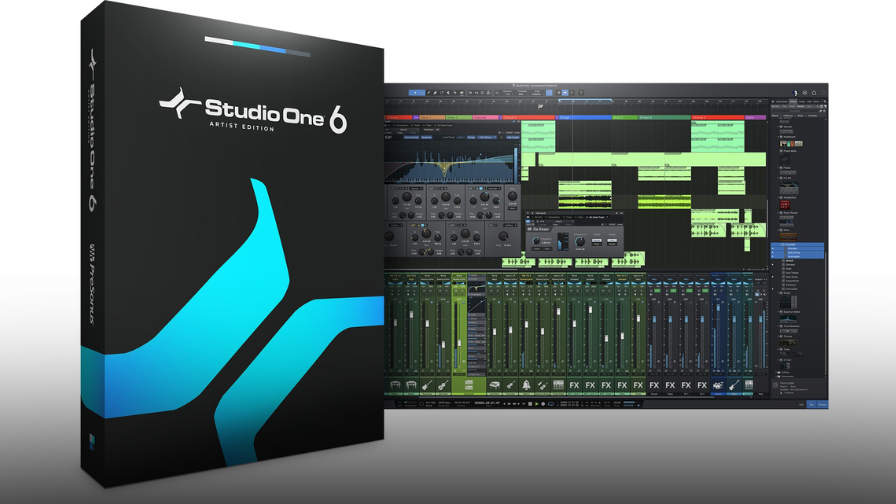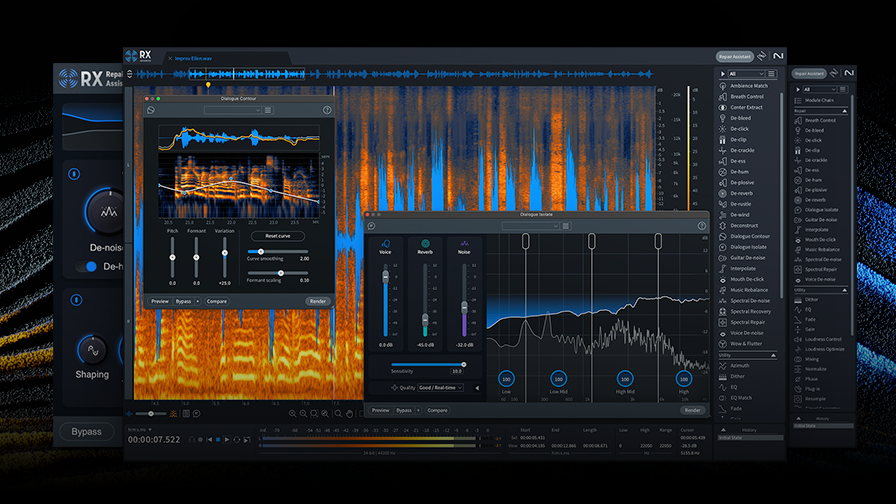“A DAW is more than just software—it’s the center of your creative universe.”

Choosing the right DAW (Digital Audio Workstation) can feel like picking a life partner. It’s a long-term commitment that can define your workflow, shape your creativity, and impact the way you approach music production. Studio One, developed by PreSonus, is one such DAW that has caught the attention of many in the music production world. It’s packed with features that cater to both seasoned pros and newcomers. But the burning question remains: is it worth investing in Studio One for your creative needs?
This review will break down Studio One’s core features, performance, strengths, and potential drawbacks. I’ll also throw in some fun trivia about its history and evolution, so stick around!
Contents
- 1 First Impressions: A Streamlined Workspace
- 2 Recording and Editing: Hands-On Simplicity
- 3 Mixing and Mastering: All-in-One Solution
- 4 Instrument Libraries and Plugins: Not Just Another Stock Set
- 5 Trivia Break!
- 6 Chord Track: A Songwriter’s Dream
- 7 Performance: Stability and Low Latency
- 8 Reasons to Buy Studio One
- 9 Reasons to Avoid Studio One
- 10 Final Verdict: Who Should Get Studio One?
First Impressions: A Streamlined Workspace
When you open Studio One for the first time, one thing immediately stands out: simplicity. The layout is sleek and user-friendly, with a focus on drag-and-drop functionality. This means that whether you’re arranging tracks, adding effects, or even importing samples, you can do it all by simply dragging elements from the browser into the session window. It’s a non-linear workflow that speeds up your process and feels incredibly intuitive, even if you’ve never touched a DAW before. For engineers or producers used to more traditional setups like Pro Tools or Cubase, this approach may feel revolutionary. You don’t have to spend endless time navigating menus or searching for hidden features—everything you require is readily available.
Recording and Editing: Hands-On Simplicity
Studio One excels in recording and editing workflows. Whether you’re tracking vocals, guitar, or a full band, the platform ensures that recording is smooth and efficient. With multitrack recording capabilities, you can easily capture performances and manage sessions with dozens of tracks, all while keeping everything organized.
Editing audio in Studio One is also a breeze. From basic trimming and moving clips to more complex tasks like audio quantization and pitch correction, it’s all straightforward. Thanks to ARA (Audio Random Access), Studio One integrates with Melodyne better than any other DAW. Pitch correction and timing adjustments are nearly effortless, allowing you to work with vocals and other monophonic instruments in real time. It feels like Melodyne is built right into Studio One, which is a lifesaver for vocal producers.
Mixing and Mastering: All-in-One Solution
This is where Studio One truly shines for engineers. Once you’ve recorded and edited your tracks, the mixing and mastering process is seamless, thanks to its dedicated mastering suite.
Integrated Mastering Suite
Most DAWs require you to export your mix to a separate mastering program, but not Studio One. With its built-in Project Page, you can move directly from mixing to mastering without ever leaving the DAW. This allows for real-time updates; if you make changes to a mix, those updates automatically reflect in your mastering session. This means less bouncing, importing, and exporting files. Instead, you have one continuous workflow from start to finish. For anyone working on albums or EPs, this is an absolute game-changer.
Studio One Mixing Console
The Mix Console in Studio One is fully customizable, allowing you to personalize your workspace. You can resize faders, create FX chains, and use the Fat Channel XT plugin for high-quality EQs, compressors, and limiters. The drag-and-drop functionality extends here as well, letting you insert plugins directly onto channels without any fuss.
Another standout feature is pipeline integration, which allows for using external hardware in your mixing workflow. If you’re someone who loves the sound of outboard gear, Studio One gives you the flexibility to easily incorporate your analog gear into the digital workflow.
Instrument Libraries and Plugins: Not Just Another Stock Set
Studio One comes with a suite of plugins that would make any producer smile. Let’s dive deeper into some of the highlights:
- Impact XT and SampleOne XT
- Whether you’re into beat-making or love experimenting with sounds, these are must-haves. Impact XT serves as your go-to drum machine, while SampleOne XT allows you to sample and manipulate sounds with ease. Both are highly intuitive and feel similar to standalone plugins like Battery or Kontakt. You can import loops, chop them up, and create your own instruments on the fly.
- Presence XT
- Studio One’s flagship sampler instrument, Presence XT, comes loaded with tons of realistic instruments. From pianos and orchestral sounds to guitars and synths, it’s incredibly versatile. For musicians who love to layer instruments and create rich textures, Presence XT provides a solid foundation.
- Mai Tai
- If you’re a synth-head, Mai Tai will be one of your favorite stock plugins. It’s a polyphonic analog modeling synth that offers deep sound design options. Whether you’re after warm pads, sharp leads, or thick basses, Mai Tai can deliver.
Trivia Break!
Did you know? Studio One’s seamless integration with Melodyne came about because PreSonus was one of the first companies to adopt ARA technology. This deep integration makes it the DAW of choice for anyone heavily into vocal production.
Chord Track: A Songwriter’s Dream
One of the most innovative tools in Studio One is the Chord Track. It allows you to experiment with chord progressions and harmonies in real-time. You can apply harmonic changes to your entire song, even after the initial recording, without needing to manually transpose every instrument. The Chord Track works across both MIDI and audio, making it perfect for producers who want to quickly experiment with different arrangements.
Imagine you’ve recorded a guitar riff in E minor but want to see how it sounds in G major. Instead of re-recording the part or shifting individual notes, you can adjust the entire song with the Chord Track. This is a huge time-saver for songwriters or anyone who enjoys improvising with different harmonic ideas.
Performance: Stability and Low Latency
When it comes to performance, Studio One holds its own against any DAW out there. The low-latency performance is particularly impressive, especially for those working on large projects with many tracks and plugins.
PreSonus has optimized its audio engine for efficiency, so you don’t have to worry about crashing or glitches, even with heavy sessions. If you’re someone who’s dealt with the frustration of lag or system overloads in other DAWs, you’ll find Studio One to be a breath of fresh air.
Reasons to Buy Studio One
Studio One has a lot to offer, but here are the key reasons why you might want to make it your go-to DAW:
- User-Friendly Interface
- With its drag-and-drop workflow, Studio One eliminates many of the tedious steps other DAWs require. You can work faster and more efficiently, even if you’re new to music production.
- Integrated Mastering Suite
- This is probably the single biggest reason to go with Studio One. Having a fully integrated mastering suite within your DAW is a massive time saver and ensures a smoother workflow from mixing to mastering.
- Seamless Melodyne Integration
- If you’re serious about vocal production, Studio One’s seamless integration with Melodyne via ARA technology is second to none. No bouncing back and forth between different software, no tedious exporting—just a smooth, cohesive workflow.
- Powerful Chord Track
- Perfect for songwriters and arrangers, the Chord Track allows you to experiment with chord progressions across your entire song, whether it’s MIDI or audio. It’s an invaluable tool for quick and effective experimentation.
- Exceptional Stock Plugins
- The stock plugin suite is powerful enough to handle most production needs. From Impact XT for beats to Fat Channel XT for mixing, Studio One’s plugins are professional-grade and ready for serious work.
- Customization
- Studio One is all about letting you work the way you want. Whether it’s the flexible mixing console, customizable hotkeys, or the ability to drag-and-drop practically anything, it’s designed to fit into your unique workflow.
Reasons to Avoid Studio One
While Studio One is a fantastic DAW, it’s not without its drawbacks. Here are a few reasons it might not be the best fit for everyone:
- No Real Collaboration Tools
- Studio One lacks the cloud-based collaboration features found in DAWs like Ableton Live or Pro Tools. If you often collaborate with other producers or engineers remotely, this could be a limitation.
- MIDI Editing Lacks Depth
- While the basic MIDI tools work fine, Studio One’s MIDI editing capabilities might feel limited compared to powerhouses like Logic Pro X. If your work relies heavily on MIDI manipulation, this could be a sticking point.
- Learning Curve for Advanced Features
- While the interface is user-friendly, diving into the deeper features—especially in the mixing and mastering stages—can be overwhelming for beginners. The learning curve is steep for those who want to maximize its full potential.
Trivia Break!
Studio One was originally designed by a team that included former Steinberg Cubase developers. This history explains its efficient workflow and user-centric design, blending elements from both Cubase and a more modern approach to DAW technology.
Final Verdict: Who Should Get Studio One?
While Studio One does have some limitations, such as the lack of robust collaboration tools and slightly underwhelming MIDI editing features, these drawbacks pale in comparison to its overall strengths. For producers who prioritize workflow efficiency, recording quality, and mixing/mastering capabilities, Studio One is a top-tier option. It’s also perfect for those who want a DAW that doesn’t require endless tinkering or complex menu navigation—everything just works intuitively.
It’s a perfect choice for producers who:
- Need advanced mixing and mastering tools.
- Appreciate an intuitive, drag-and-drop workflow.
- Want seamless Melodyne integration for vocal editing.
- Love experimenting with chord progressions using the Chord Track.
If you’re on the fence, take advantage of the free trial offered by PreSonus. Try it out in your own workflow and see if it feels like the DAW you’ve been missing. Chances are, you’ll find yourself hooked by its versatility, power, and ease of use.
In the crowded world of DAWs, Studio One certainly holds its own—and for many, it might just become the centerpiece of their creative universe.













